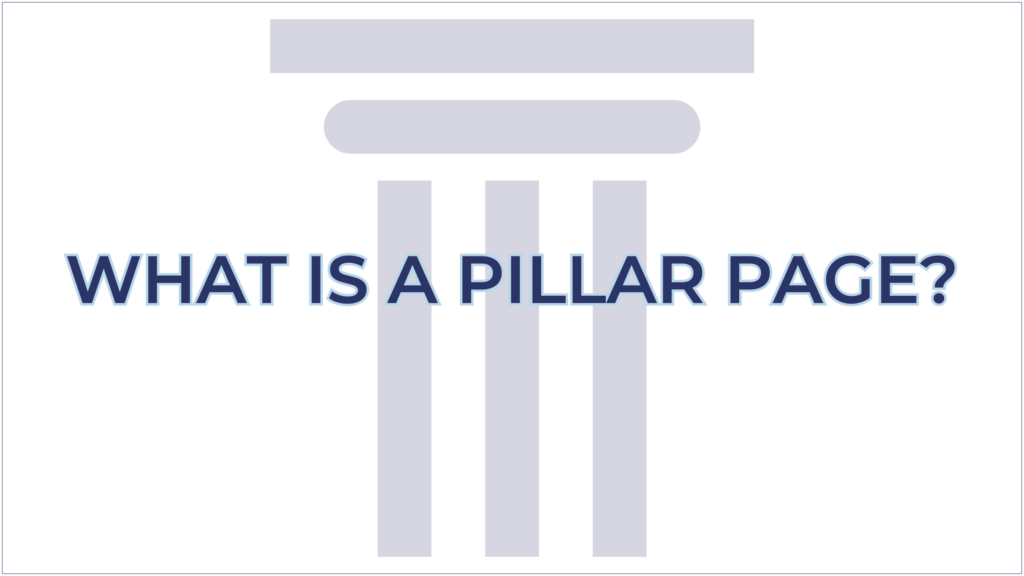
What is a Pillar Page?
A Pillar Page is a long-form content page that’s the foundation of a larger content marketing strategy. It covers a core topic in full, gives an overview of the subject and links to more detailed, related content (cluster content or subtopics). The pillar page is the central hub that organizes and connects all the content on your site related to the main topic.
Pillar pages help structure your site and SEO by creating a logical web of content. They help search engines understand the relationships between different pieces of content on your site so your content can rank for a whole range of related keywords.
For example, if you’re a digital marketing business, you might create a pillar page on “Content Marketing” that links to subtopic pages about SEO, social media marketing, email marketing, etc. This structure helps the user experience by giving a clear path through your content and signals to search engines that your site is an authority on the broader topic.
Why ARE Pillar Pages Important?
- SEO and Keyword Ranking: Pillar pages are designed to target broad, high-volume keywords and the subtopic pages target more specific, long-tail keywords. This way you can capture a wider range of search queries and rank for both general and specific terms. According to HubSpot, sites with a well-structured content strategy that includes pillar pages can see 20-30% increase in organic traffic.
- User Experience: A pillar page gives the user a clear and organized way to dive into a topic. By linking to related subtopics you give the user a logical and user-friendly path through your content. This improves the overall user experience and encourages the user to spend more time on your site, reduce bounce rates and increase engagement.
- Content Organization and Strategy: Pillar pages help you organize your content better, so all related topics are connected in a meaningful way. This makes it easier for users and search engines to navigate your site. It also helps you identify gaps in your content strategy so you can create new content that complements and strengthens your existing content.
- Authority and Trust: By covering a topic in full on a pillar page you establish your site as an authority on that topic. This authority is reinforced by the subtopic pages which add more depth and expertise. Over time, this builds trust with your audience, and they’re more likely to come back to your site for information and recommendations.
- Content Repurposing and Optimization: Pillar pages are perfect for repurposing existing content. You can take individual blog posts, articles or other content you’ve already created and link them together within a pillar page structure. This not only gives old content new life but also optimizes your content for SEO.
Working with an Agency to Create Pillar Pages
Creating a pillar page requires planning, content creation and SEO optimization – areas where an agency can help. An agency can help you decide on the topics for your pillar pages, develop a content strategy that aligns with your business goals and create content that resonates with your audience.
Plus– an agency can ensure your pillar page and subtopic pages are fully SEO’d so you rank higher for your target keywords. They can also provide ongoing support to help you update and refine your content as needed to keep it relevant and effective.
